Bubba’s 3 keys for booming tee shots
Published: Last updated:
The 2012 and 2014 Masters Champion has never had a formal lesson in his life. “I’m a feel player,” he insists. “I see the shot I want to hit, try to feel it in my body, then hit it. I don’t like to get any more technical than that. If I miss a shot, I don’t ask what position my club was in, or what my legs were doing, or anything like that. I try to remember how I was feeling, and ask myself if I committed myself fully.”
Ted Scott, Watson’s caddie for the last six- and-a-half years, says that while his boss probably does understand terms like ‘in-to-out swingpath’, ‘upright swingplane’, and ‘restricted hip-turn’, he never uses them. “The only thing I’ll ever mention is something to do with his set-up,” he adds. “Bubba totally owns his swing. He just visualises the shot he wants to hit, and then he goes for it.”
Today’s Golfer met Bubba in Arizona to identify the secret behind those prodigious drives. Three central themes emerged – and though you might not have Watson’s talent, they will all help you hit a longer, straighter ball.
1. Hover the clubhead
Bubba Watson’s address position is really fairly standard. He appears relaxed; has an orthodox interlocking grip; his knees are slightly flexed; his feet are roughly shoulder-width apart; and he plays the ball opposite the instep of his front foot, as nearly every instruction book advocates.
His grip is strong, as you’d expect, but a lot of players with similarly strong grips could never hit the ball as far as Bubba – think Paul Azinger, Bernhard Langer or Zach Johnson.
You’ll note Bubba is a hoverer. The clubhead is off the ground as he addresses the ball, just as Greg Norman did in his heyday. “I guess I’ve always done it,” he says. “It’s just perfectly natural to me now.”
A grounded head can lead to a snatchy takeaway, as you need to take up the club’s weight as you start the swing. Bubba’s tactic is designed to create a smoother, less erratic, takeaway, and release tension. Because he hovers the head, Watson says the clubface of his driver is at precisely the same height as his ball on the tee. “I don’t ever change the height of the tee,” he adds. “Doesn’t matter what shot I’m trying to hit, I always tee it the same.”

2. Square at address
Where Bubba’s set-up is slightly different is in the position of his back foot, and the tightness with which he holds the club. As you can see in picture 1 above, Bubba’s back foot is actually square to the ball-target line. Sometimes he even toes it in a bit, parallel to his front foot. Nearly every other golfer flares his/her back foot out slightly in the opposite direction.
You will not see Bubba’s position in any instruction manual because, for most people, it would severely restrict the movement of the hips, and likewise the shoulders, in the backswing. It might theoretically be useful as a drill for someone looking to calm excessive hip turn – or whose backswing was loose and uncoordinated. But, unless the problem was severe, you probably wouldn’t do it on the course.
As you’ll see in this swing sequence, however, Bubba is almost supernaturally flexible which means he is still able to make an enormous turn. It is important to realise though, Bubba Watson does not hit the ball extraordinary distances because he points his back foot inwards at address, but rather in spite of the fact.
The other element of his address position where Bubba deviates from convention is in the area of grip tightness. Ask a group of professionals how tightly they hold the club on a scale of one to ten (one being extremely loose, ten being extremely tight), most will say three or four, before explaining that the lighter your hold on to the club the more likely you are to release the clubhead correctly and with speed.
But when asked how tightly – or lightly – he holds the driver, Watson admits he doesn’t really know, “but it’s probably about a nine.” Asked if he understands the question and the scale, he repeats the same number.
“It probably doesn’t look that tight when I’m setting up to the ball,” he says. “But I feel that if I’m going to hit it hard, I need to grip it hard.”
 3. Front heel off the ground
3. Front heel off the ground
Once you do watch Watson swing, his position in the driving distance category comes as no surprise. The clubhead goes back an incredible distance, though it should be noted this is a result of the combination of shoulder turn and wrist break. Bubba’s shoulder turn is big certainly, but it’s not the biggest in the game. Add the extensive wristcock at the top of the backswing, however, and the club moves way beyond the parallel.
Other important elements of Watson’s backswing that help him generate power are the impressive extension he creates without moving his head far off the ball (picture 2), the full hip turn (many teachers encourage a large shoulder turn coupled with a restricted hip turn to increase torque and create leverage, but Watson feels no such inhibitions), and his raising of the left heel off the ground in much the same manner as Jack Nicklaus (picture 3). The result is that, at the top of the backswing, Bubba is fully coiled and wound behind the ball, and poised to come down hard into the back of it.
A good transition is paramount if you want to hit the ball a good distance, and Watson’s is perfectly sequenced. He returns his lead heel (his right) to the ground (picture 4) and, as his hips begin to uncoil and the legs start driving towards the target, his shoulders momentarily remain turned. As the lower body keeps moving, he drops the hands into place with his trail (left) elbow coming down close to his trail side. Tremendous lag is created – a must for power.
The club now comes down on a much flatter plane than the one it went back on and, importantly, his head remains behind the ball (picture 5). Because Bubba’s lower body moves so quickly, his arms and hands need to move fast to keep up. If his lower body clears before the clubhead arrives, he’ll likely hit a push or, if his hands get too quick, a snap hook (hence the various adjustments to his club).
At impact, Bubba is still behind the ball while his weight is moving on to his front foot – the ideal weight shift for a long and accurate drive.

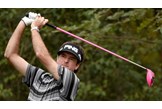
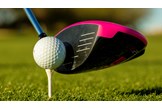
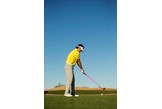
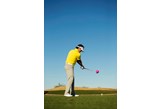
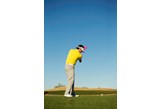
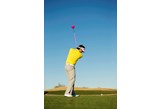
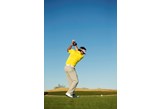
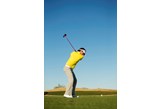
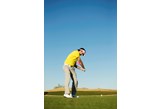
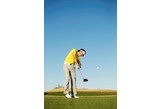
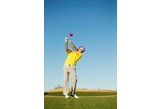
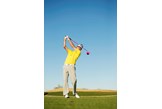
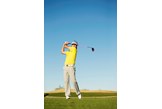
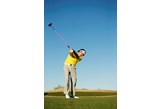
 3. Front heel off the ground
3. Front heel off the ground